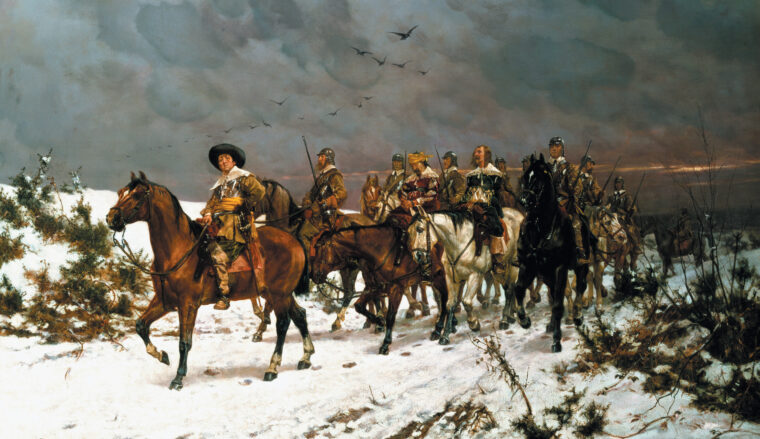
Mortar
Before the Battle of the Bulge: Forming the 551st “GOYAs”
By Donald Roberts IIBy summer’s end 1944 Adolf Hitler, along with much of his staff, began to realize that Germany was in serious danger of losing the war. Read more

Mortar
By summer’s end 1944 Adolf Hitler, along with much of his staff, began to realize that Germany was in serious danger of losing the war. Read more

Mortar
In the Spring of 1944, Japanese Admiral Soemu Toyoda assembled a large fleet of warships at Tawi-Tawi in the southern Philippine Islands. Read more

Mortar
It was surely as ungainly a weapon as was ever made, and one of the clumsiest. It was a 3-foot, 32-pound steel tube with a monopod to support it, a huge trigger on the underside, and a padded shoulder piece at one end. Read more

Mortar
Fifty years have gone by since the inception of the Patton Museum of Cavalry and Armor at Fort Knox, Ky., Read more

Mortar
By late October 1941, the armies of the Third Reich had swept deep into western Soviet Russia. Read more

Mortar
I was always fascinated by the mastery of water,” Sir Donald Coleman Bailey reflected, long after the end of World War II. Read more

Mortar
To their Russian enemies they were the “Spanish mercenaries of Hitler’s Fascist lackey, Franco.” To Hitler himself, “One can’t imagine more fearless fellows. Read more

Mortar
By the spring of 1645, the open warfare between King Charles I and his rebellious Parliament had dragged on for nearly three years, with no apparent end in sight. Read more

Mortar
Spanish Legionaries charged into battle crying, “Long Live Death.” They sang of being “the Bridegrooms of Death” and proved they meant it with over 10,000 killed and 35,000 wounded. Read more

Mortar
The mortar is perhaps the oldest surviving ordnance piece developed during the Middle Ages. The earliest known forerunner to the mortar, introduced by Spanish Muslims about ad 1250, was essentially an iron-reinforced bucket that hurled stones with gunpowder. Read more

Mortar
When the first tanks appeared in World War I, they were relatively lightly armored and protected the crews only against small-arms fire. Read more

Mortar
During the highly destructive Battle of Aschaffenburg, American soldiers reported seeing civilians fighting alongside German troops. Such reports were common during the battle, as were a number of reports of Germans troops shooting their own civilians as they tried to flee the city. Read more

Mortar
Early in 1944, German Field Marshal Erwin Rommel, the defeated hero of North Africa and now head of Army Group B in France, was tasked with strengthening the Atlantic Wall defenses against Allied invasion. Read more

Mortar
In early 1942 things could have hardly looked bleaker for the Allies. In Europe, Hitler’s war machine had steamrolled across the entire continent and was now battling before the gates of Moscow. Read more

Mortar
During the more than half a century since the end of World War II, there has been much speculation about what would have happened if President Harry Truman had not dropped the atomic bomb on Hiroshima and Nagasaki and the invasion of Japan had actually taken place. Read more

Mortar
By 1901, the Small Arms Committee—the body within the War Office tasked with arming the British Army with weapons—sought to replace their then-standard issue rifle: the Magazine Lee-Metford Rifle Mark II. Read more

Mortar
From an altitude of 30,000 feet, the swift Japanese reconnaissance aircraft flew high over Saipan and Tinian, photographing the brisk and extensive engineering effort under way on the American airfields far below. Read more

Mortar
When American soldiers landed in France in June 1944 as part of the great Allied crusade to liberate Europe, they were well trained, fully equipped, and brimming with confidence. Read more

Mortar
The origins of the Universal Bren Gun Carrier can be traced to the Ford T-powered Carden-Loyd machines developed in Great Britain in the mid-1920s, specifically the Mark VI model of 1927. Read more

Mortar
When it came to weapons production, the Imperial Japanese Army’s requirements often came in second to the needs of the Imperial Japanese Navy. Read more